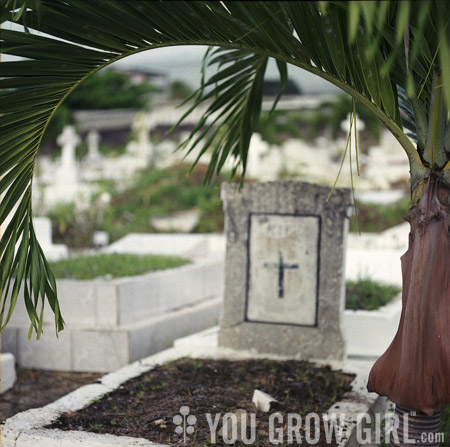
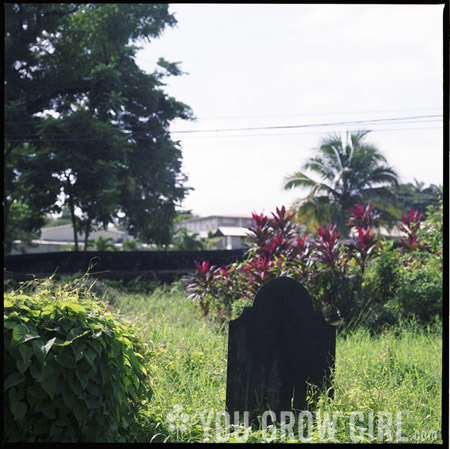
Whenever I travel I tend to be drawn to the mundane: Where do people live? Where do they shop? What do they eat? Somehow, I often end up passing a graveyard. Over time and many trips, I have started to make observations about the different traditions that are observed around burials. And as a gardener, I find I am often drawn specifically to take note of and/or document the plant life that grows there as well as the small gardens that families plant on or around individual plots.
In Dominica I spent more time in cemeteries than is usual as I was specifically looking for any traces of my ancestors that I could find. With little resources or space, burial grounds are regularly overturned to make room for new bodies so it was rare to find a gravestone older than 20-30 years. Edited to add: Commenting below reminded me that Hurricane David completely devastated Dominica in 1979. That’s would be a major factor in why there are few gravestones before 1980.
I did not expect to find anything, but Davin and I looked carefully just in case. While searching, I took the time to document some of the interesting things that I saw, specifically the plants. I thought you might like to see it too and even though it has taken me three years to post these images, I had you in mind when I took them.
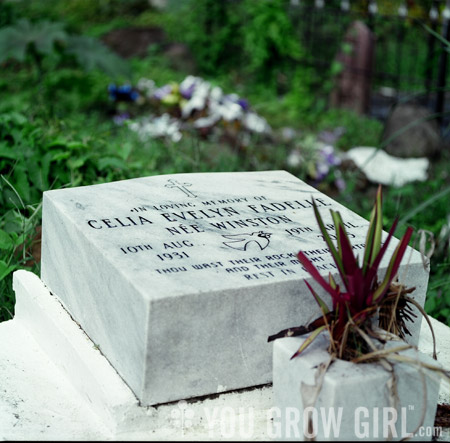
This was the closest I came to locating a distant relative in a graveyard. I was never able to determine if I am related to her.
The following photos were taken at the Catholic cemetery in Roseau, Dominica. This cemetery was well maintained with clear and easy pathways between graves.
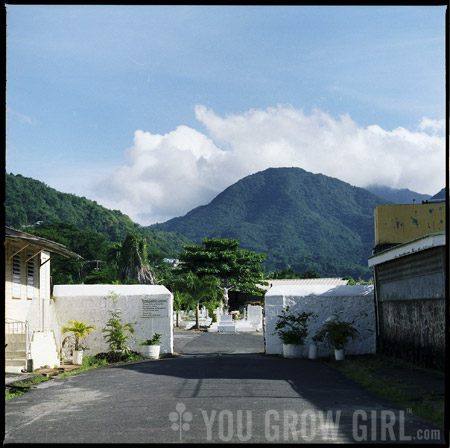
I’ve begun with a photo of the cemetery as you approach the entrance from the road. You can see some pots of assorted tropical plants in front. I also included this image to give you a feeling for the surrounding landscape. Dominica is very mountainous. Throughout our three week stay we lived in the hills to the left side of this view. We passed by two cemeteries every time we walked into town, but we could not see this one clearly from the main road.
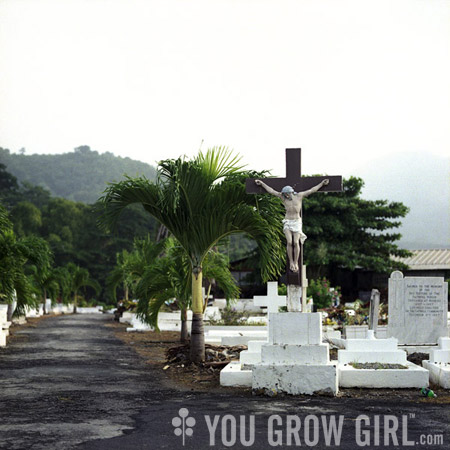
This is a closer view as you walk through the main entrance. This cemetery was landscaped throughout with small palm trees. I’ve been to several Caribbean cemeteries and this was the most nicely planted of any I have seen so far.
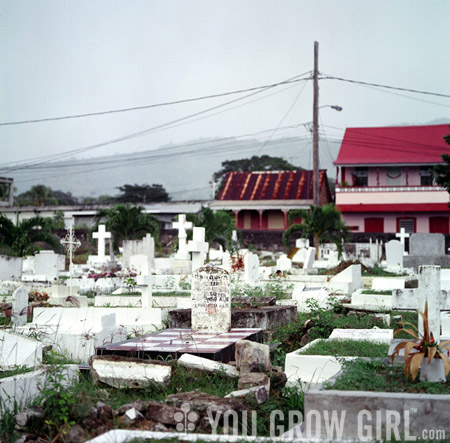
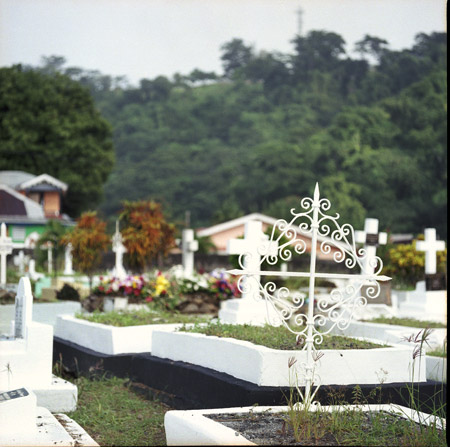
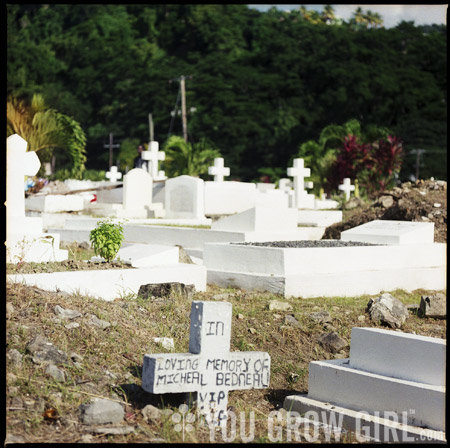
These three images show the tops of each plot and how they are constructed. In many cases the top was filled with soil and there were grasses growing wild or small gardens planted in them like raised beds.
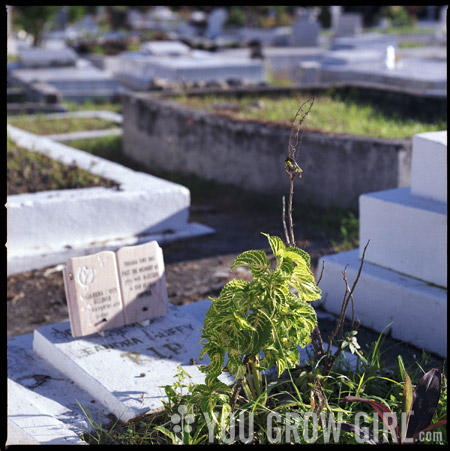
A coleus is planted on this one.
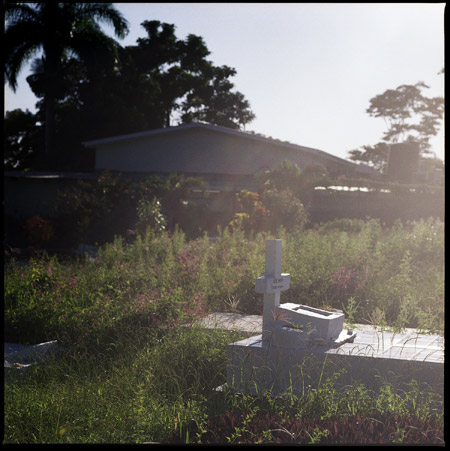
This view turns towards a wilder portion of the cemetery. Here you can see wild grasses growing en masse and a pretty pink-flowered vine that grows like a weed all over the island, smothering anything that doesn’t move. If you look really closely you can also see a purple patch of Tradescantia pallida aka Purple Heart Plant just in front of the grave.
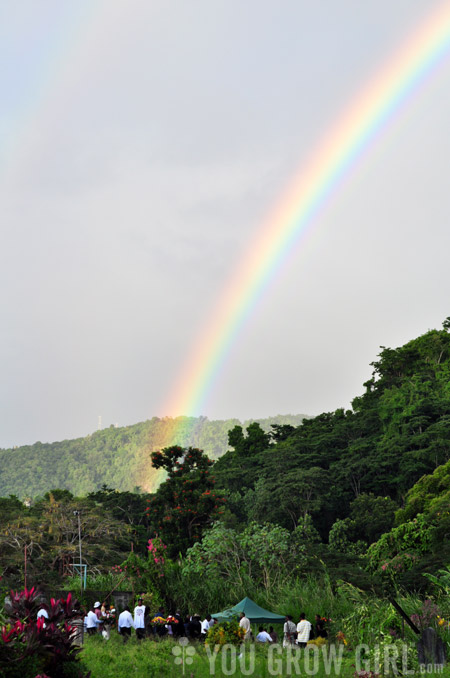
The next set of photos were taken at the Government Cemetery on the other side of the road. For nearly three weeks I walked past this cemetery but did not go in because I assumed the name meant that only government officials were buried here. Right before I left I learned it is actually the graveyard for everyone else who is not Catholic, so I made sure to go inside to survey for family names.
I took this photo of the double rainbow brightening the sky above a funeral in the Government Cemetery on one of our first days in Dominica. I didn’t know it then, but with so much humidity and daily light rains and mountain misting, double rainbows are extremely common. I saw one literally every single day of the trip!
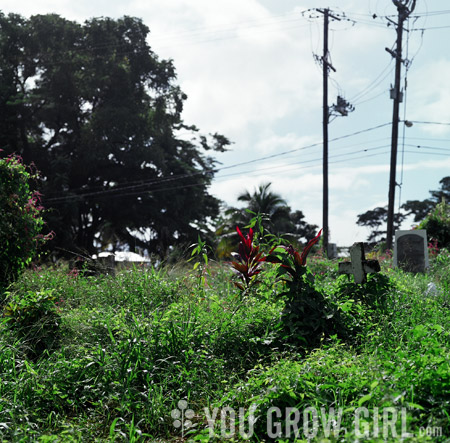
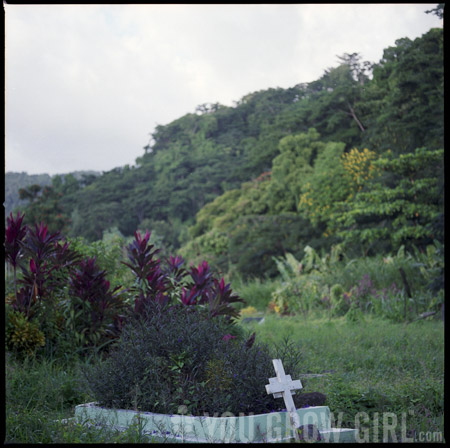
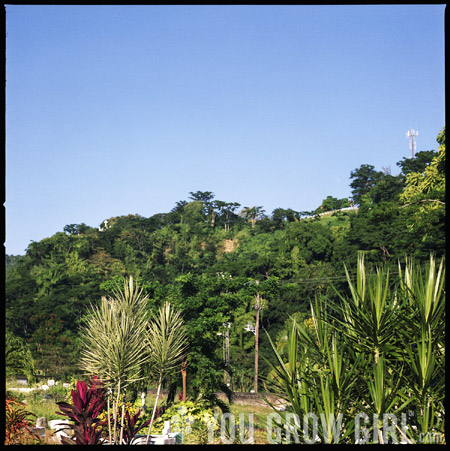
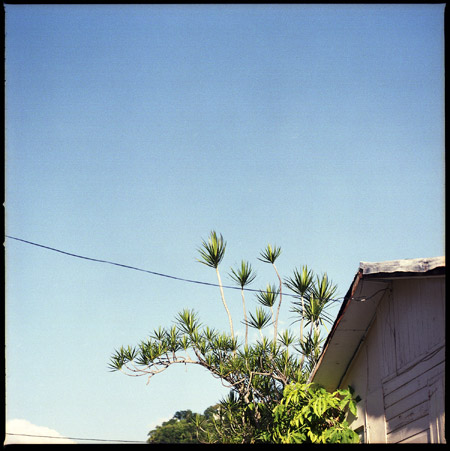
I think I may have seen more dracena in the cemeteries than anywhere else. It makes me laugh now when I look at the sad, stick-like dracena I grow in a pot at home compared to the beautiful, puffy specimens that I saw growing there with practically no intervention or care whatsoever. Why do we gardeners torture ourselves so? Why can’t we be satisfied growing plants that do best in our own climates? Of course, as I ask this question I can’t help but think of the four pots of anemic colocasia I have overwintering in the dining room. I go to tropical places and come back even more determined to surround myself with these plants that have no hope of ever reaching their potential here.
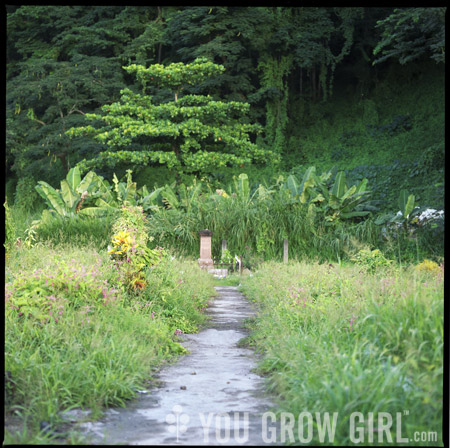
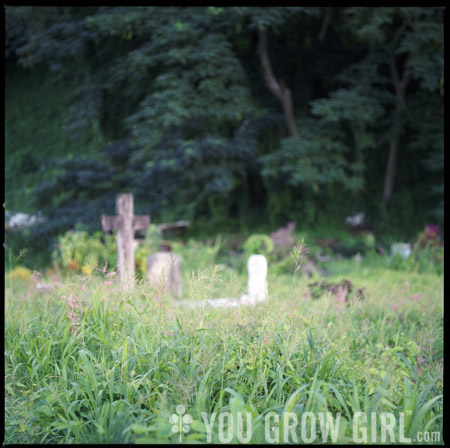
Unlike the Catholic cemetery, the Government or Town cemetery was a tangled mass of unstoppable, quickly encroaching bush. I have said before that the difference between gardening here and gardening in Dominica is that here we work hard coaxing things to grow. There they work hard to keep things from growing. Gravestones in the town cemetery were covered in plants and there were many graves that I was never able to see because I simply could not get to them. Fortunately, there are no deadly reptiles or insects in Dominica. I certainly would not have traversed the thick weeds and tall grasses had this been in St. Lucia!
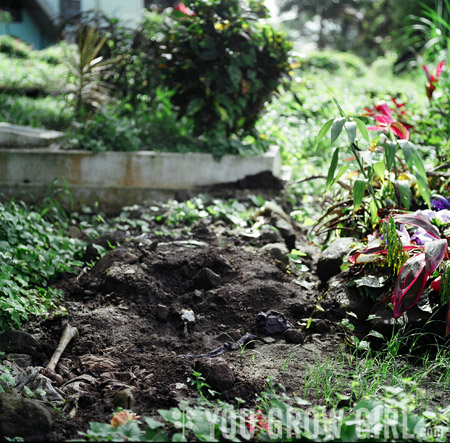
Many sites were in bad shape. After much inspection and deliberation, we concluded that this had to be a human bone cast aside when a new body was buried on top of an old grave. It’s a fact of life and death, yet I’m still surprised how much it shocked me to see it there.
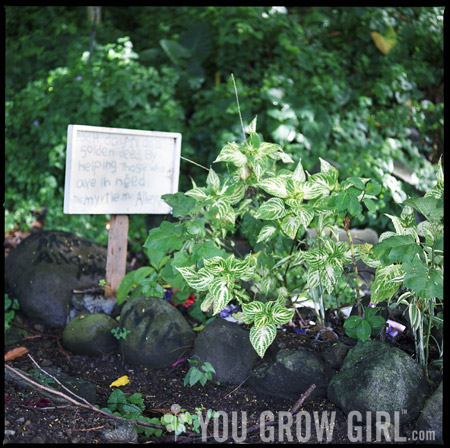
Despite the chaos there were some new grave sites that were planted up and maintained. This is a common tropical but I’m afraid I don’t know its name.
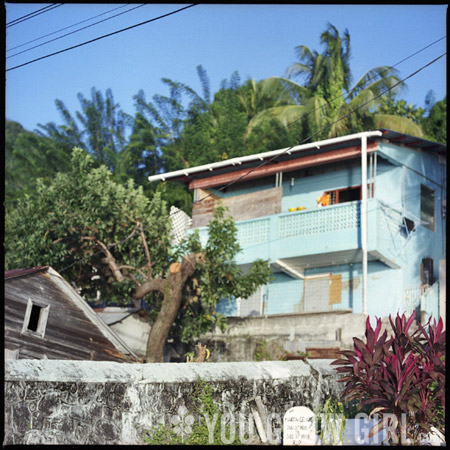
And finally, a graveyard that I passed one day on a long three hour walk to the beach. Again, you can see a nice stand of dracena off to the right.
Thanks for this post. If here would be the possibility to share via Google+, I would have given a +1 ;-)
You can learn a lot about a society by how they bury their dead
I agree! It’s also been really interesting to learn how graveyards and practices differ based on climate and weather conditions. Places like Dominica that have suffered greatly due to hurricanes tend to have less resources to keep up maintenance. The entire island was devastated in 1979 and they are still recovering in many ways. When you are trying to recover and live, maintaining the graves of the dead is less important.
Gayla,
I just found your site and I love it! I have taken up gardening in the past year and it seems like a day doesn’t go by that I tell myself how much I love my garden. I started a blog but it seems like my gardening skills come more naturally than my writing skills. I am working on it. I loved your thoughts on the growth at the cemeteries. It is interesting how they can all be so different. I loved your rainbow picture as well, how fun that they see one about every day. I will read your other posts and follow your website. I feel like I have connected to nature and God like I hadn’t before and I now love reading about gardening from others. Thanks for all your inspiration to me.
Melanie
Fascinating and beautiful!
Love the photo with the double rainbow, it seems peaceful. I think the ‘mundane’ matters is part of what makes traveling special. It’s one thing to see the major sites, which is easy enough to experience and another to actually know how people in a society live.